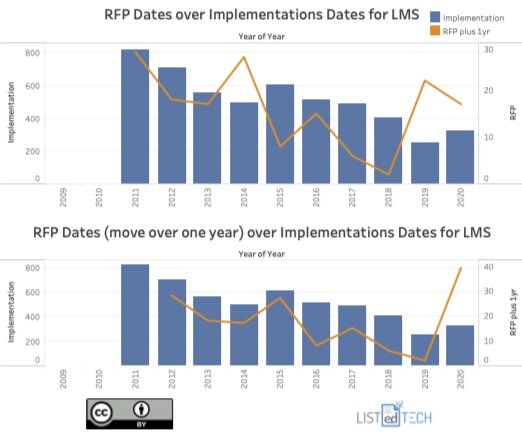
Since the inception of ListEdTech, we mostly relied on web crawling to gain our knowledge about implementations in HigherEd (and K-12) for all product categories. As we want to become more efficient and versatile with our data collection, and possibly get an extra indicator of market trends, we have started, six months ago, compiling RFP data.
RFPs are not used by all HigherEd institutions, but they are mostly mandatory for public institutions in Canada and the USA. From what we know, RFPs represent about 4% of the new market implementations. In order to gain information about RFPs, we have subscribed to two companies to get the most detailed information.
With our two subscriptions in tow, we have looked at the information provided. We noticed that historical RFP data is less accurate, mostly because the original information (links, postings or whatever) can no longer be found. Also, while some RFPs bear fruit, others do not provide any valuable information or are simply not allocated to new companies.
From the past six months, we have not found anything mind-blowing. This being said, we can tell that RFPs are a good predictor of product purchases. When looking at the top graph, you can see, for each year, RFP information and implementation data.
In the second graph that is also, we took the same data but moved the RFPs one year in the future. Now, the RFPs from 2015 are aligned with the implementations from 2016. As you can see, it’s scary how this is accurate.

We have done this experiment with LMS data from the past ten years, but we are now working on getting RFP data for several of our other product categories as well. With what we currently have, I can see that Financial and HR data will have on average a three-year predictor while for CRM, it is a one-year prediction. Actually, CRM prediction is just a few months less than LMS which is closer to a thirteen-month prediction. SIS has the longest with almost 5 years.


